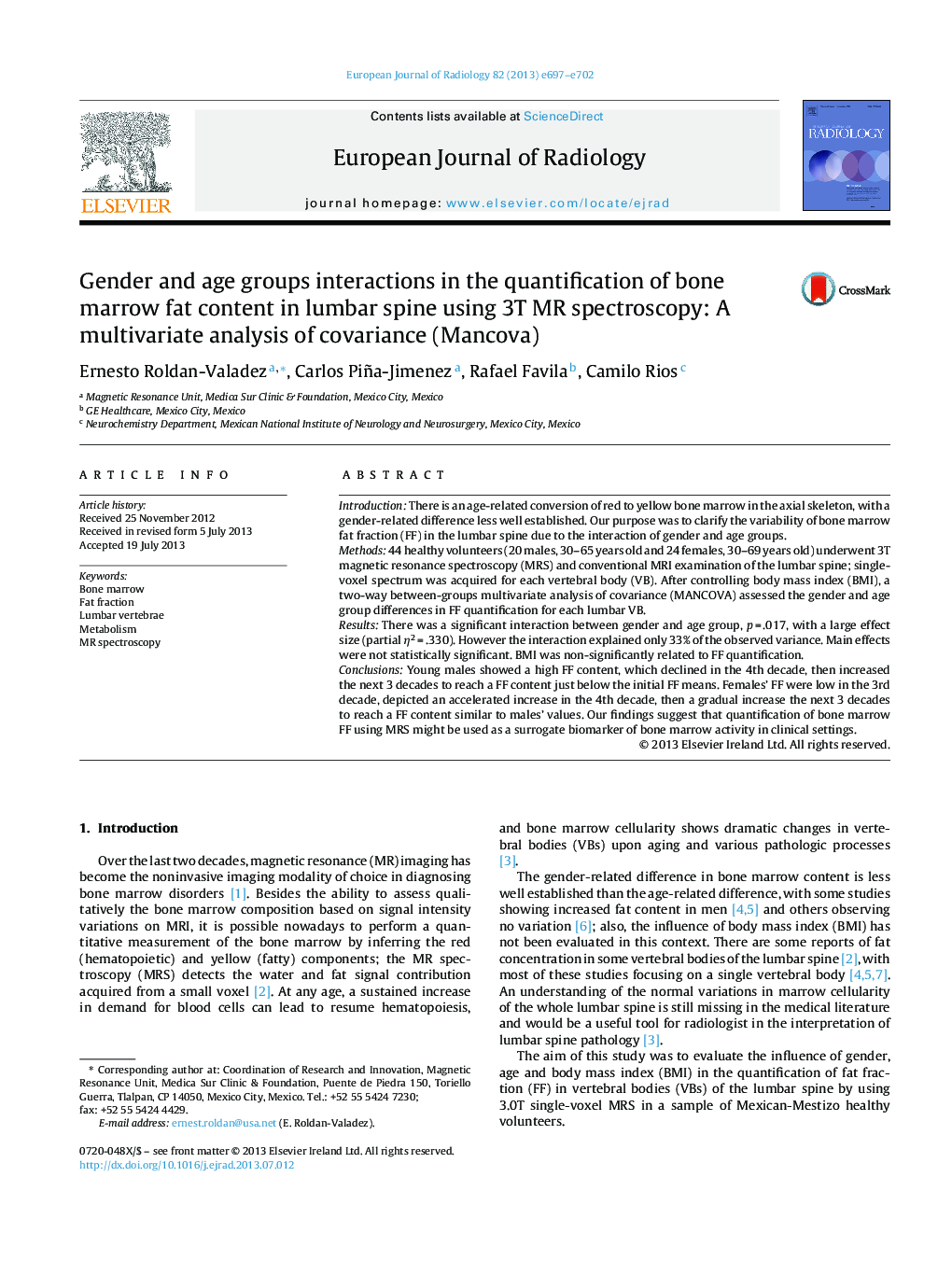| Article ID | Journal | Published Year | Pages | File Type |
|---|---|---|---|---|
| 4225652 | European Journal of Radiology | 2013 | 6 Pages |
IntroductionThere is an age-related conversion of red to yellow bone marrow in the axial skeleton, with a gender-related difference less well established. Our purpose was to clarify the variability of bone marrow fat fraction (FF) in the lumbar spine due to the interaction of gender and age groups.Methods44 healthy volunteers (20 males, 30–65 years old and 24 females, 30–69 years old) underwent 3T magnetic resonance spectroscopy (MRS) and conventional MRI examination of the lumbar spine; single-voxel spectrum was acquired for each vertebral body (VB). After controlling body mass index (BMI), a two-way between-groups multivariate analysis of covariance (MANCOVA) assessed the gender and age group differences in FF quantification for each lumbar VB.ResultsThere was a significant interaction between gender and age group, p = .017, with a large effect size (partial η2 = .330). However the interaction explained only 33% of the observed variance. Main effects were not statistically significant. BMI was non-significantly related to FF quantification.ConclusionsYoung males showed a high FF content, which declined in the 4th decade, then increased the next 3 decades to reach a FF content just below the initial FF means. Females’ FF were low in the 3rd decade, depicted an accelerated increase in the 4th decade, then a gradual increase the next 3 decades to reach a FF content similar to males’ values. Our findings suggest that quantification of bone marrow FF using MRS might be used as a surrogate biomarker of bone marrow activity in clinical settings.
